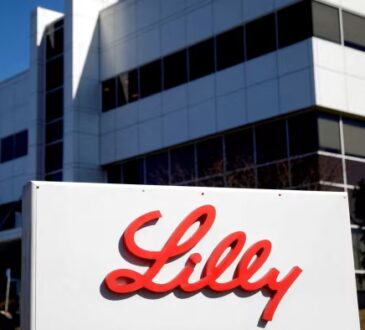Ryan Barone is cofounder and CEO of RentRedi, a property management software that simplifies the renting process for landlords and renters.
I spend a good deal of time talking to landlords and property investors, and I can see that we’re in a tough housing market—high prices, rising interest rates and strict lending requirements are making it harder for investors to break into real estate or expand their existing portfolios.
Many of the aspiring investors I talk to would love to take advantage of the wealth-building benefits of rental properties, but their struggle to qualify for traditional loans due to insufficient income or a lack of steady, salaried employment can be a major barrier to reaching their goals.
After speaking with investors at multiple conferences, I realized that many people don’t know about debt service coverage ratio (DSCR) loans, a financing option specifically designed for rental properties.
Unlike conventional mortgages, which rely on personal income verification, DSCR loans are based solely on the income potential of a renter-ready property. This means investors can qualify based on how much rent the property generates rather than their personal earnings.
How DSCR Loans Work
A DSCR loan is a financing option available to real estate investors solely for the purchase of rental properties. With this, lenders evaluate the property’s income potential instead of the borrower’s personal income.
In order to determine who qualifies for a DSCR loan, lenders consider the debt service coverage ratio of a property, which measures its ability to generate sufficient revenue to pay back the loan. Lenders calculate this ratio by dividing the property’s net operating income by its total debt obligations.
A DSCR score of 1.25 indicates that a property’s income projection is 125% of its debt obligations. This is typically the minimum score required by lenders because it provides some cushion to pay back the debt.
One strategy you can use to improve your DSCR score is to optimize your rental income by reducing operating expenses and screening tenants to ensure reliable, on-time payments and reduced vacancies. Property management software can help you automate rent collection, maintenance requests, tenant screening and financial tracking.
Property Requirements And Restrictions
Unlike traditional financing, DSCR loans have strict requirements and restrictions. DSCR loans require properties to be move-in ready, with only minimal repairs allowed—typically no more than $2,000. Like score thresholds, though, repair allowances and criteria can vary by lender.
Additionally, DSCR loans are strictly for investment purposes, meaning that you cannot reside in the property. Lenders expect these properties to generate rental income, and this is how they ensure your property will not serve as a primary residence.
Benefits Of DSCR Loans
I find that the biggest draw of DSCR loans is their flexibility in terms of income requirements and loan repayment terms. Many lenders also offer customized terms, such as interest-only payments or longer-term loans with extended repayment periods (DSCR loans are available in 15-year, 30-year and 40-year terms), to help property investors maximize their cash flow.
This is particularly useful if you’re looking to acquire multiple rental properties since DSCR loans have no limits on the number of properties you can finance. This can help you to scale your portfolios more rapidly than you might with conventional loans.
Potential Drawbacks Of DSCR Loans
While DSCR loans offer compelling advantages, investors should also be aware of certain drawbacks. Down payment requirements tend to start at 20% to 25% of the property’s purchase price, with interest rates ranging from 6.125% to 9.5%. These rates exceed those of conventional mortgages, leading to larger monthly payments and higher overall borrowing costs.
On top of this, the maximum loan amount for DSCR financing typically ranges between $2 million and $5 million, which is no problem if you’re purchasing a smaller investment property, but can restrict access to larger-scale investments. Additionally, some lenders require six months’ worth of cash reserves, which can be challenging for those without significant liquid assets.
Investors should also be mindful of potential prepayment penalties, limiting flexibility for refinancing or early sales. Moreover, these business-purpose loans lack the same consumer protections (such as the ban on prepayment penalties and slower foreclosure processes for missed payments) as conventional mortgages.
Tips To Make DSCR Loans Successful
While I have outlined DSCR’s unique advantages, because of the potential pitfalls, it is even more important that you select properties that meet lender requirements and are more guaranteed to generate strong rental income.
To ensure positive cash flow, I recommend that you focus on properties with rental income that significantly exceeds loan payments. Negotiate favorable purchase prices, set competitive rental rates and minimize vacancy periods through effective property management.
On this last note, think about how you will manage the property. Hiring help can be expensive. If you can do it yourself using property management software, you can avoid spending 8% to 12% of your monthly rent on property management fees.
Even though DSCR loans limit upfront repair costs, keeping your properties in excellent condition is essential for attracting and retaining tenants, lowering long-term operating costs and increasing net operating income (NOI). If needed, a property management tool can help you automate and schedule routine maintenance. Just be sure to set aside a reserve fund to avoid unexpected financial strain.
Since DSCR loans rely on rental income, any disruption—such as vacancies, late payments or unexpected repairs—can strain cash flow and impact debt repayment. To mitigate this risk, investors should build in a buffer. For instance, if your lender requires a DSCR score of 1.25, shoot for 1.3 to 1.4 instead. This gives you breathing room for irregularities like seasonal vacancy or one-off repairs.
Proper planning and setting aside cash can help protect against shortfalls and maximize the benefits of DSCR financing.
Final Thoughts
This financing strategy can provide you with a competitive advantage and a greater potential for accelerated growth. By focusing on properties that are turnkey, renter-ready and produce strong cash flow, you can leverage DSCR loans to build a sustainable and profitable real estate portfolio.
The information provided here is not investment, tax, or financial advice. You should consult with a licensed professional for advice concerning your specific situation.
Forbes Business Council is the foremost growth and networking organization for business owners and leaders. Do I qualify?




